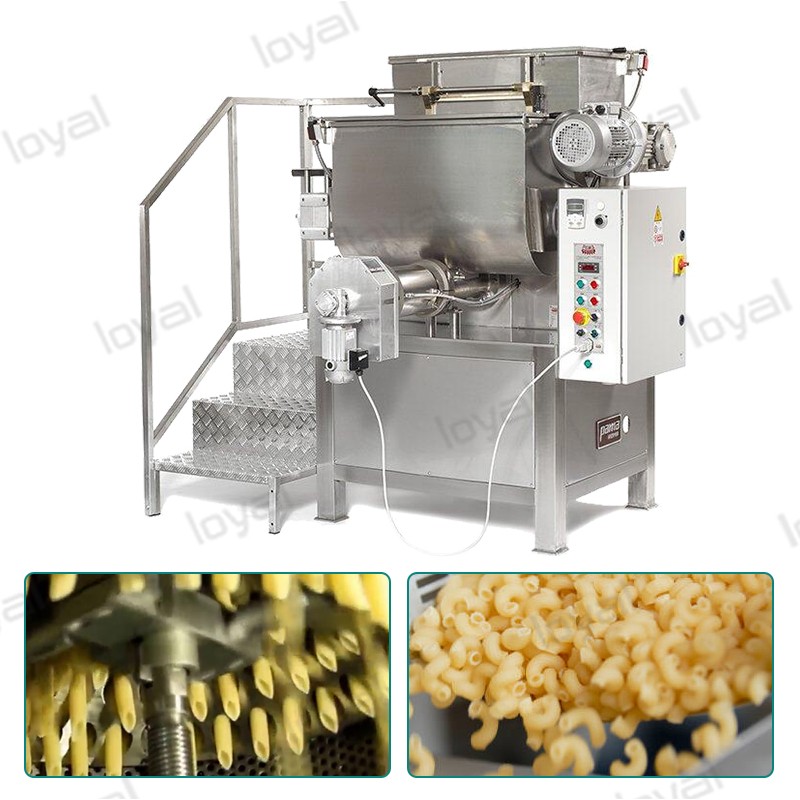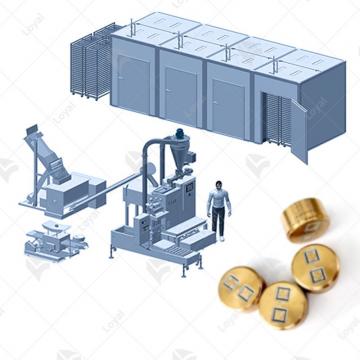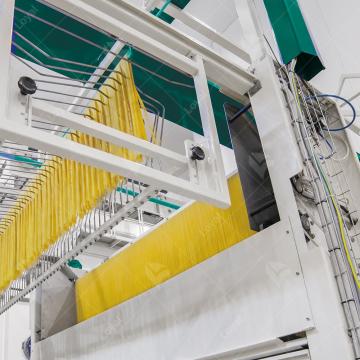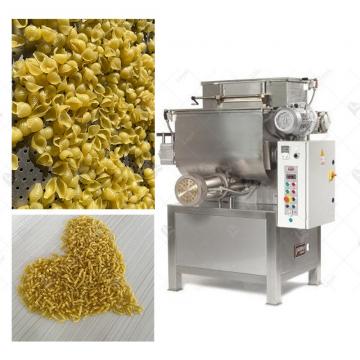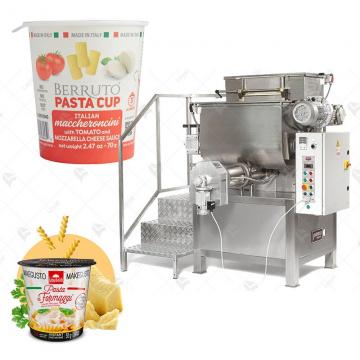Pasta Manufacturing Machines Unleashed: High-Efficiency and Energy-Saving Solutions
Pasta Manufacturing Machines Unleashed: High-Efficiency and Energy-Saving Solutions
Pasta manufacturing has undergone a remarkable transformation with the advent of cutting-edge technology, particularly in the realm of pasta manufacturing machines. These sophisticated devices play a pivotal role in the efficient production of various pasta varieties, meeting the escalating demands of consumers worldwide. From traditional pasta extruders to advanced automated systems, the evolution has been nothing short of revolutionary.Shandong Loyal Industrial Co., Ltd. has incorporated advanced technologies from Lineapasta and Pasta Technologies Group (PTG) in the production of its macaroni.

In today's environmentally conscious era, the significance of integrating high-efficiency and energy-saving solutions into pasta manufacturing processes cannot be overstated. As the global focus on sustainability intensifies, the food industry, including pasta production, is under increasing pressure to adopt eco-friendly practices. This article delves into the pivotal role played by pasta manufacturing machines in achieving high efficiency while preserving energy resources.
Evolution of Pasta Manufacturing Technology
The roots of pasta manufacturing trace back centuries, rooted in traditional craftsmanship. However, the paradigm shift began with the industrial revolution, leading to the mechanization of pasta production. Today, pasta manufacturing machines represent the pinnacle of technological advancements, blending heritage with cutting-edge innovations.
The journey from manual pasta-making to the present-day technological marvels has been marked by continuous innovation. State-of-the-art pasta manufacturing machines incorporate advanced features such as computerized control systems, precision engineering, and materials designed for durability. These advancements not only enhance the speed of production but also contribute to the overall quality of the pasta.
Key Features of High-Efficiency Machines
High-efficiency pasta manufacturing machines are characterized by unparalleled precision in shaping and cutting pasta. The integration of advanced sensors and automated control systems ensures consistent quality, meeting the stringent standards of renowned pasta brands like Jovial, DeLallo, Faella, San Giorgio, and Great Value. The precision also extends to the speed of production, optimizing output without compromising on quality.
Automation has become a cornerstone in the design of modern pasta manufacturing machines. From dough preparation to extrusion and drying, these machines operate seamlessly, requiring minimal human intervention. This not only enhances productivity but also reduces the likelihood of errors, ensuring a uniform and superior product.
The contemporary emphasis on sustainable practices is reflected in the design of high-efficiency pasta manufacturing machines. Manufacturers are increasingly incorporating energy-efficient components and eco-friendly materials. This not only aligns with environmental goals but also contributes to cost savings for pasta producers.
Unveiling the Energy-Saving Solutions
The heart of energy-saving solutions in pasta manufacturing machines lies in the integration of innovative components. Cutting-edge motors, sensors, and heat recovery systems contribute to a substantial reduction in energy consumption. These innovations not only align with global sustainability initiatives but also make a compelling case for businesses seeking to minimize operational costs.

The adoption of energy-saving solutions in pasta manufacturing machines has a profound impact on environmental sustainability. Reduced energy consumption translates into lower carbon footprints, making the entire pasta production process more environmentally friendly. This aligns with the values of conscious consumers and positions pasta manufacturers as responsible stewards of the planet.
Case Studies: Successful Implementations
Several pasta manufacturers have successfully embraced high-efficiency machines, leading to transformative outcomes. Case studies highlight the experiences of companies that have integrated these technologies, showcasing improvements in production speed, cost-effectiveness, and the overall quality of pasta products.
The benefits observed in the pasta manufacturing industry following the implementation of high-efficiency machines are multifaceted. These include increased production capacities, reduced operational costs, improved product consistency, and enhanced market competitiveness. Industry leaders acknowledge the pivotal role of these machines in driving positive change.
Future Trends and Prospects
The future of pasta manufacturing machines holds exciting possibilities with the emergence of cutting-edge technologies. From artificial intelligence-driven systems optimizing production to the integration of smart sensors for real-time monitoring, the industry is on the cusp of a technological renaissance.
Anticipated developments in energy-saving solutions for pasta manufacturing machines include further refinement of sustainable materials, increased use of renewable energy sources, and the exploration of novel approaches to minimize environmental impact. As the industry evolves, manufacturers are poised to contribute significantly to global sustainability goals.
Conclusion
In conclusion, the unleashed potential of high-efficiency and energy-saving pasta manufacturing machines has ushered in a new era for the industry. The precision, automation, and sustainability features have collectively propelled pasta production to unprecedented heights, benefitting both manufacturers and consumers.
As we look to the future, the trajectory of pasta manufacturing machines seems set for continued innovation. With a strong focus on sustainability and efficiency, these machines will play a pivotal role in shaping the future of pasta production, meeting the demands of a dynamic and conscious market.
FAQs: Common Questions About Pasta Manufacturing Machines
1. How do high-efficiency pasta manufacturing machines contribute to sustainability?
High-efficiency pasta manufacturing machines contribute to sustainability through various mechanisms. The incorporation of energy-efficient components, such as motors and sensors, reduces overall energy consumption. Additionally, the use of sustainable materials in machine construction aligns with environmental goals, making the entire pasta production process more eco-friendly.
2. Can these machines accommodate different types of pasta production?
Yes, high-efficiency pasta manufacturing machines are designed to accommodate a wide range of pasta varieties. From traditional shapes to specialized products, these machines offer versatility in extrusion and shaping, ensuring that manufacturers can meet diverse consumer demands.

3. What benefits do pasta manufacturers gain from adopting energy-saving solutions?
Pasta manufacturers stand to gain several benefits from adopting energy-saving solutions in their production processes. These include reduced operational costs, a more environmentally friendly footprint, compliance with sustainability standards, and a competitive edge in the market. The long-term cost savings associated with energy-efficient machines are particularly notable.
4.Are there notable brands in the pasta manufacturing industry using these machines?
Yes, several renowned brands in the pasta manufacturing industry have embraced high-efficiency machines. Notable examples include Jovial, DeLallo, Faella, San Giorgio, and Great Value. These brands have experienced tangible benefits in terms of improved production efficiency, product consistency, and overall quality.
5. How do these machines impact the overall quality of pasta products?
The impact of high-efficiency pasta manufacturing machines on the overall quality of pasta products is significant. The precision in extrusion and shaping ensures uniformity, and the automated processes reduce the likelihood of human error. This results in a superior product that meets the high standards set by both manufacturers and discerning consumers.

